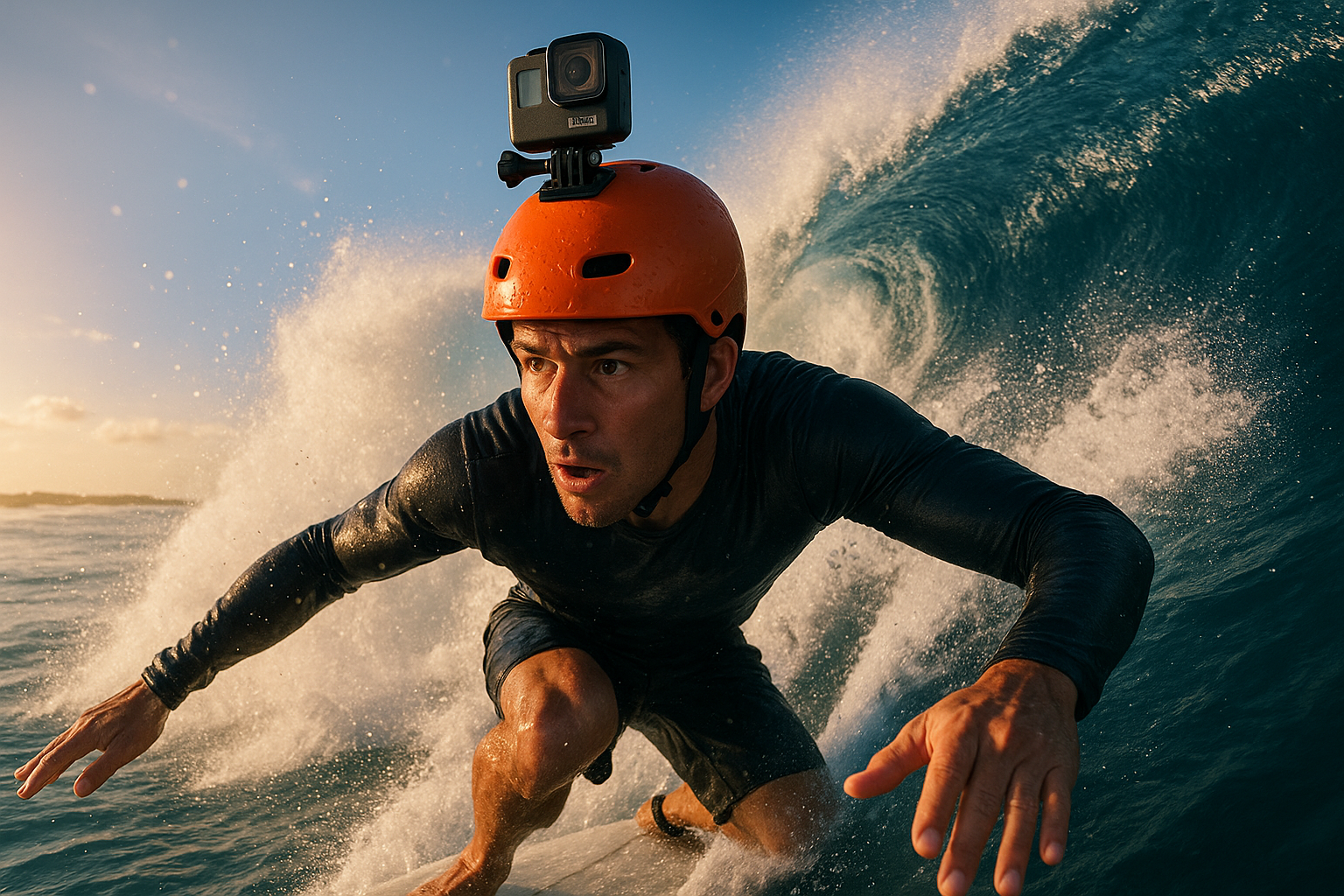
GoPro, Inc. (NASDAQ:GPRO) stands as one of the most recognizable names in the world of portable cameras and digital storytelling. From its humble beginnings on the beaches of California to its current status as a global technology brand, GoPro’s journey has been defined by innovation, risk-taking, and the evolving needs of content creators and adventurers.
Founding and Early Vision
GoPro’s story began in 2002 when Nick Woodman, a surfer and entrepreneur, recognized the lack of accessible and durable cameras capable of capturing high-quality action footage. Frustrated by the limitations of existing equipment, Woodman developed a prototype using a 35mm camera attached to his wrist with a makeshift strap. His vision was to help athletes and outdoor enthusiasts capture their experiences from a first-person perspective, a market niche that had yet to be fully explored.
The company’s first commercial product, the GoPro HERO 35mm, debuted in 2004. Sold at surf shops and through direct channels, the original camera featured a waterproof housing and a sturdy design, quickly gaining popularity among surfers, snowboarders, and extreme sports athletes. GoPro’s commitment to ruggedness and simplicity became its calling card, differentiating it from traditional digital cameras and camcorders.
Rise to Prominence and Product Innovation
GoPro’s ascent accelerated with the launch of the HERO Digital series in 2006. The introduction of digital video and still photography capabilities aligned perfectly with the burgeoning world of online video sharing, especially as platforms like YouTube gained traction. The HERO HD series, released in 2009, brought high-definition video to the action camera market, catapulting GoPro into the mainstream and expanding its appeal beyond action sports.
Over the next decade, GoPro continued to refine and diversify its product offerings. The HERO3 and HERO4 series set new standards for video quality, frame rates, and durability. With features such as Wi-Fi connectivity, mobile app integration, and user-friendly editing software, GoPro made it easier than ever for users to capture, edit, and share content.
By leveraging viral marketing, user-generated content, and partnerships with athletes and content creators, GoPro built a powerful brand identity. Videos shot with GoPro cameras often went viral, showcasing everything from extreme sports to breathtaking travel adventures. This organic marketing approach drove brand loyalty and sales, solidifying GoPro’s reputation as the go-to device for documenting life’s most dynamic moments.
Public Offering and Expansion
In June 2014, GoPro went public on the NASDAQ exchange under the symbol GPRO. The initial public offering was met with strong demand, reflecting optimism about the company’s growth prospects and dominant position in the action camera space. GoPro used the influx of capital to invest in research and development, global expansion, and new business ventures.
Seeking to extend its reach beyond hardware, GoPro ventured into the realms of content creation and cloud services. The company introduced GoPro Plus, a subscription-based service offering cloud storage, device replacement, and exclusive content editing tools. GoPro also experimented with media production, creating original content and broadcasting live events to engage its community and diversify revenue streams.
Challenges and Strategic Shifts
Despite its initial post-IPO success, GoPro faced a series of challenges that tested its resilience. Competition intensified as other electronics manufacturers, including tech giants such as Sony (NYSE:SONY), entered the action camera market. Price competition and rapid innovation cycles pressured GoPro’s margins.
Attempts to expand into adjacent markets, such as the Karma drone, met with mixed results. The drone was ultimately discontinued after technical issues and slower-than-expected adoption. GoPro also confronted difficulties adapting to a consumer electronics industry defined by rapid technological change and shifting consumer preferences, including the growing sophistication of smartphone cameras.
In response, GoPro focused on its core strengths, streamlining operations and doubling down on its signature HERO camera line. The company embraced a direct-to-consumer model, increasing its focus on e-commerce and recurring revenue through subscriptions. Strategic cost-cutting measures and a renewed emphasis on product quality and user experience helped GoPro regain stability.
Global Brand and Future Prospects
Today, GoPro remains a symbol of adventure, creativity, and authenticity. The HERO series continues to evolve with features such as 5K video, improved image stabilization, and advanced connectivity. GoPro’s mobile app ecosystem and subscription offerings have become central to its business model, creating an integrated experience for millions of users worldwide.
While the action camera market is more competitive than ever, GoPro’s brand, community, and history of innovation provide a strong foundation for future growth. The company’s ongoing efforts to adapt to changing consumer habits, embrace software and services, and inspire the next generation of storytellers position it well for the evolving landscape of digital content creation.
Disclaimer:
This article is for informational purposes only and does not constitute financial advice or a recommendation to buy or sell any securities. Always conduct your own research or consult with a qualified financial advisor before making investment decisions.
